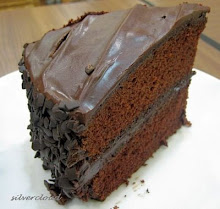I have done most my research, but it needs some serious editing & citing etc. before it gets posted so yehh..
OMG its already the next day... :( :( :( sighhh
BACKGROUND RESEARCH:
Flying devices, from the relatively simple kite to the extremely complex aircraft, have always been a source of inspiration and amusement for many. Sinclair (2003) argues that “Before and after the train and the automobile, people have tried to figure out how to fly” (p.10). However, this aspiration was not quickly achieved; it was a slow yet gradual progress of the development of flying devices.
Historians believe that “the first flying device made out of paper is the kite, which was invented by the Chinese about 2000 years ago” (Garcia, n.d). Garcia suggests that the exact origin of the first paper airplane remains a mystery. However it was believed to have been invented in Japan as a traditional art of origami (Garcia). The designs were simplistic and were not capable of flying at an acceptable standard (Garcia). This type of paper plane was believed to have originated from the Edo Era (1603 – 1868) (Garcia).
According to Sinclair (2003, p.10) Leonardo Da Vinci, renowned for his work regarding flying devices, was believed to be the “first European to explore the properties and characteristics of paper airplanes as he made references of making airplanes out of parchment.”
Usually paper airplanes are made purely for recreation. However, Garcia argues that some paper airplanes did serve a purpose. For example in 1930, Jack Northrop, one of the founders of Lockheed Corporation (an aircraft company), used paper airplane models to test the flying properties of real airplanes (Garcia). Strictly speaking, however, Northrop did not follow the conventional method of making paper airplanes, instead he used methods involving cutting and re-attaching the paper. Also, during World War II (1939 to 1945), paper was used to make aeroplane models due to the material restrictions of metals at the time (Garcia). Hence paper airplanes have not only been useful for entertainment and recreation but also served important scientific purposes.
The reason paper airplane models were able to be used as means of testing the flying properties of real airplanes is due to the fact that “the aerodynamics of paper airplanes are the same to aerodynamics of real airplanes” (Blackburn & Lammers,1994, p.305).
Benson (2010) states that “aerodynamics is the study of forces resulting from an object travelling in air”. This branch of science can be associated with the simplest things such as a ball being thrown up or how birds fly (Benson). However, it is also particularly important for the design of complicated machines such as aircrafts and rockets (Benson).
As shown in the diagrams above, there are four forces which act on an airplane in flight. To commence flight, an airplane must be subject to the force known as thrust, “to propel it forward” (Williams, 1981, p.4). Williams argues that for an airplane to remain in the air, it requires lift, “generated by the movement of the wings through air”. As the airplane travels through the air, “another force, know as drag, tends to hold it back" (Williams). Williams states that the drag is caused by air resistance as the airplane moves through the air. The final force, weight, is the downward pull to an object due to gravity (Benson). Benson argues that in order for a plane to fly in the air, it must produce enough lift to overcome weight for it to defy gravity.
To this date, there have not been any investigations or research conducted specifically regarding the relationship between the size of a paper plane and the mean distance travelled. The question, “Do larger paper airplanes travel further than smaller ones?” had not previously been answered. However, based on the background research conducted, it would possible to hypothesise that larger paper planes are capable of flying further than smaller paper planes. This is probably due to the fact that their larger wings would most likely result in more air lift, thus enabling them to remain in the air for longer and consequently fly further than smaller paper planes. This hypothesis was tested by examining how and/or whether the size of a paper plane affects the mean distance it travelled over multiple tests.

















.JPG)




























